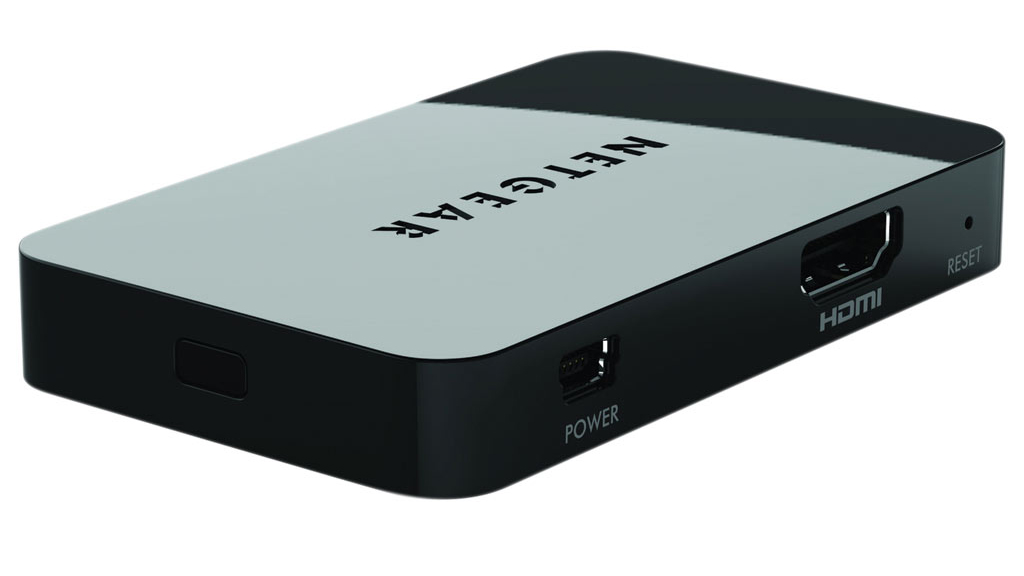TechRadar Verdict
Pros
- +
Only needs to be plugged in to one end
- +
Fair price
- +
Small design
- +
Very little lag
Cons
- -
Can be fiddly to set up
- -
Won't be compatible with a wide variety of devices
Why you can trust TechRadar
We're keeping more and more of our media on our portable laptops, tablets and smartphones, but sometimes nothing can beat watching a Hollywood movie on your big screen TV.
The Netgear Push2TV PTV3000 is designed to be able to stream your media from compatible devices and broadcast them in high definition on any device with an HDMI-in port.
Unlike devices such as the Cables to Go TruLink Wireless HDMI Kit and the HP Wireless TV Connect Kit, the Netgear Push2TV PTV3000 uses Intel WiDi and Miracast technology that's built into your device to wirelessly transmit video.
This means that you don't need two bulky devices hanging out of either end of the stream (one for your mobile device and one for your TV). You just need the one box, which can sit unobtrusively behind your TV. It can be powered from USB or (with an included adapter) from the mains power supply, which is useful. Annoyingly, an HDMI cable is not included, so you'll need to buy one before you hook it up to your TV.
Using the built-in technology of your mobile device is a nice way of eliminating the need to plug in a second box, but it does mean that you're limited to the devices you can use with the Netgear Push2TV PTV3000.
If it doesn't have Intel WiDi technology, or Miracast like the Nexus 4 or the Sony Xperia T, then you won't be able to use the PTV3000.
Sign up for breaking news, reviews, opinion, top tech deals, and more.
For our tests we used an Asus V5550c which has Intel WiDi built in.
Using Intel's pre-installed software on the laptop we scanned for the PTV3000. Unfortunately, our first couple of attempts to find the PTV3000 were fruitless. There was no in-depth manual included with the PTV3000, but we found a troubleshooting guide included with the WiDi software on the laptop. It suggested to keep searching a number of times until the adapter is displayed, and, lo and behold, on our fifth attempt the PTV3000 was found.
The fact that this was explained in the help file for the laptop suggests to us that this problem might not be down to the PTV3000, and is in fact a problem with the WiDi technology.
Once the PTV3000 was found we were able to pair the laptop up and connect to it from the laptop. This process was very simple and straightforward, with clear instructions on both the laptop and from the TV we had plugged the PTV3000 into.
Once done, the laptop's display was mirrored on the TV. It looked a little ugly, but with a few tweaks to the resolution on the laptop, we got the laptop's display on the TV in full 1080p glory.
There was no noticeable lag, and overall picture quality was good. However, when changing wireless networks, or attempting to close down the WiDi program on the laptop, the connection to the PTV3000 was severed. This means that any time you want to throw your laptop's screen onto a TV, you will need to manually connect each time.
Sometimes the adapter took a long time to connect as well, though again, we're willing to put this down to the limitations of the WiDi format, rather than the PTV3000.
Verdict
For a wireless way of projecting your laptop or smartphone's screen, the Netgear Push2TV PTV3000 is one of the better methods.
That doesn't mean it's without its flaws, though, as the connection process was a bit hit and miss. However, when it does work, it's very impressive.

Matt is TechRadar's Managing Editor for Core Tech, looking after computing and mobile technology. Having written for a number of publications such as PC Plus, PC Format, T3 and Linux Format, there's no aspect of technology that Matt isn't passionate about, especially computing and PC gaming. He’s personally reviewed and used most of the laptops in our best laptops guide - and since joining TechRadar in 2014, he's reviewed over 250 laptops and computing accessories personally.
